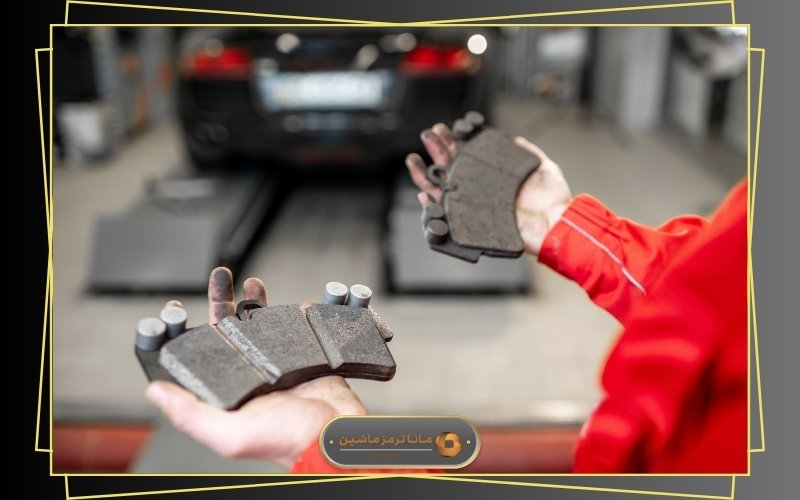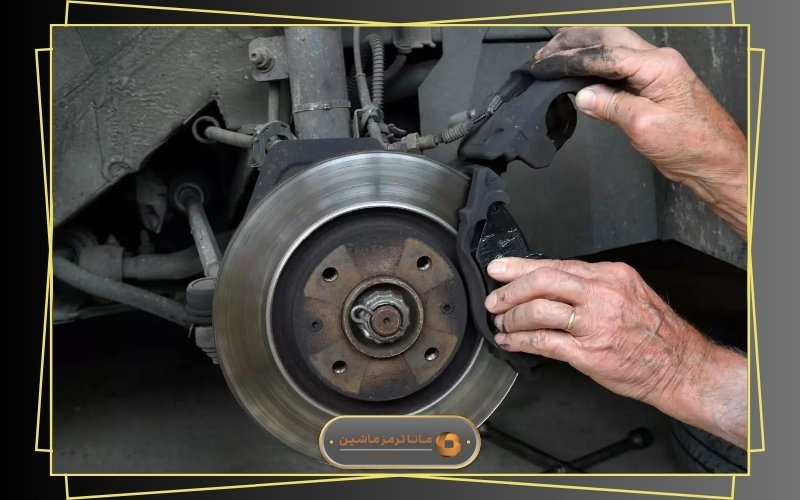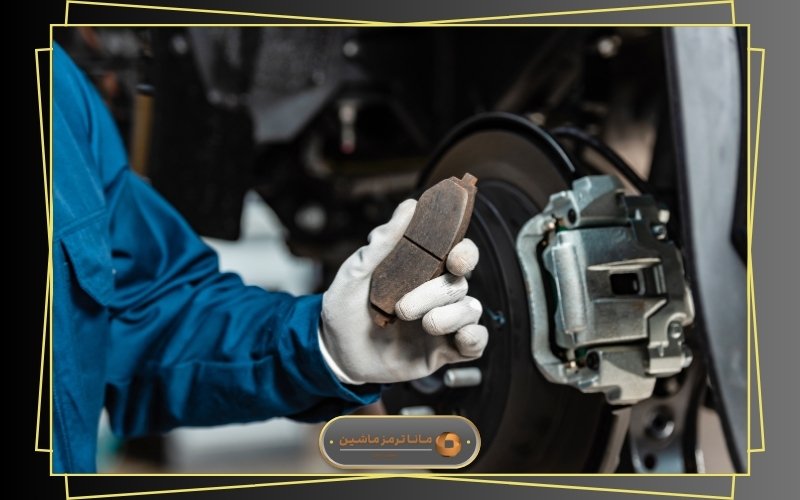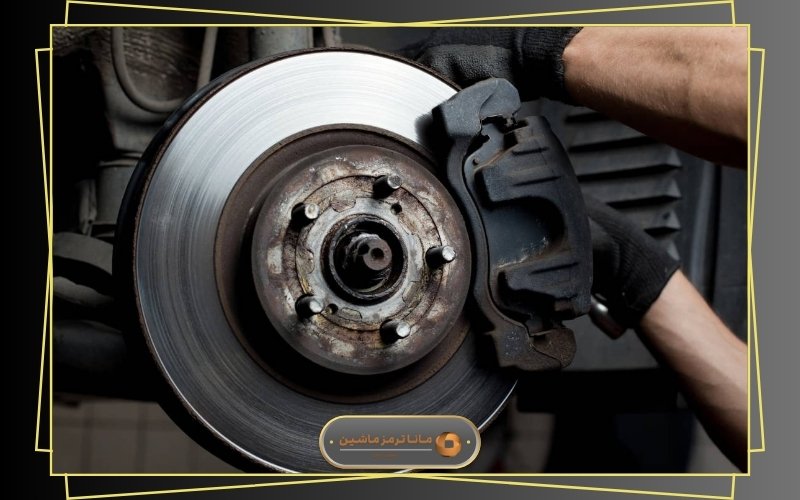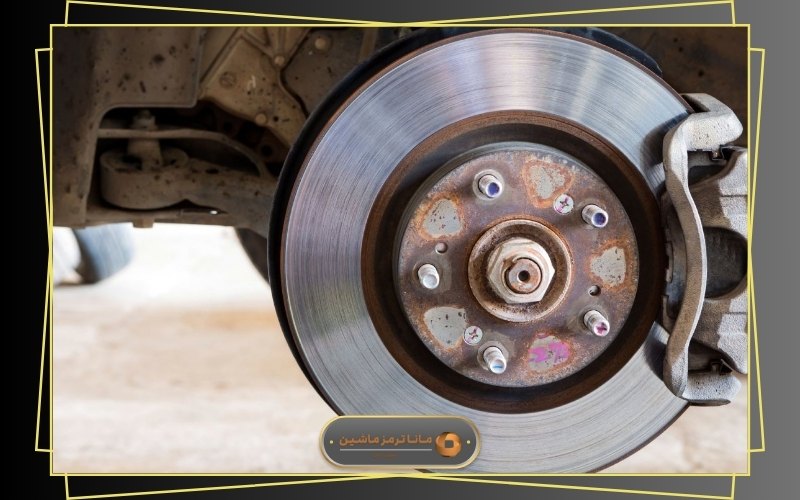Many components of a vehicle significantly impact its technical performance and safety. Some parts directly affect the car’s efficiency and condition, while others are especially crucial for protecting the lives of passengers. One of the most vital components that should never be overlooked is the braking system. The brake system consists of various parts, some of which are consumable and need to be replaced over time. Brake pads are among the most important consumable components in this system. As a driver, it’s essential to be aware of the lifespan of your vehicle’s brake pads so you can replace them at the right time. In the following, we’ll explore the optimal time for replacing brake pads and the factors that influence it.
Stay with Mana Tormoz…
The Importance of Replacing Brake Pads in Vehicles
In this article we read
ToggleWhen you press the brake pedal, the brake pads come into contact with the brake disc, generating a significant amount of friction. This process brings the wheels—and ultimately the vehicle—to a stop. Brake pads are usually visible through the space between the wheel rims.
Due to the intense pressure they endure, brake pads gradually wear out over time. This wear occurs more rapidly in specific conditions, such as in hot climates or when driving in heavy traffic. In such situations, the vehicle’s braking efficiency decreases, directly affecting driving safety. Therefore, timely replacement of brake pads is crucial. Neglecting this can lead to serious problems.
Brake Pad Lifespan
Determining the exact time to replace brake pads depends on several factors that influence their lifespan. Experts recommend that each vehicle requires pad replacement at different intervals, depending on usage and driving conditions.
According to the specialists at Mana Tormoz, front brake pads usually endure more pressure during braking and, as a result, need to be replaced more frequently. Generally, it is recommended to replace front brake pads between 10,000 and 30,000 kilometers. On the other hand, rear brake pads, which endure less pressure, typically last longer and may have a lifespan of up to 70,000 kilometers.
Additionally, if your vehicle is equipped with brake discs, it is advisable to replace them between 70,000 and 120,000 kilometers.
When Should You Replace Your Brake Pads?
Your vehicle’s user manual typically includes recommended intervals for inspecting the brake pads. While it may not specify exact replacement times, it does outline suggested periods for checking and evaluating their condition. If the pads show signs of wear, they should be replaced accordingly.
For example, the table below shows suggested replacement intervals for the brake pads of some popular vehicles:
| Vehicle | Front Pads | Rear Pads |
|---|---|---|
| Quick | 10,000 km or 12 months | 20,000 km or 24 months |
| Tiba | 10,000 km or 12 months | 20,000 km or 24 months |
| Pride | 10,000 km or 6 months | 20,000 km or 12 months |
| Peugeot 206 | 10,000 km or 12 months | 20,000 km or 24 months |
| JAC S5 | 5,000 km or 6 months | Inspect both front and rear |
| Dena | 15,000 km or 12 months | 25,000 km or 24 months |
As shown in the table, the recommended replacement times for front and rear pads vary for each vehicle and depend on different driving conditions and specific requirements.
What Is the Average Lifespan of Brake Pads?
As illustrated in the table above, brake pad replacement isn’t solely determined by mileage. Due to their crucial role in the braking process, experts recommend paying attention not only to how far you’ve driven, but also to the general lifespan of the pads. Their durability varies depending on the material and quality, and their performance may be affected by different conditions. Moreover, even if you don’t drive your car frequently, it’s advisable to inspect your brake pads every 10 to 12 months to ensure the braking system remains safe and reliable.
How to Know When It’s Time to Replace Your Brake Pads
One of the most critical issues to consider is how to recognize when your vehicle’s brake pads need replacing. Fortunately, unlike many other consumable car parts whose wear might not be easily noticeable, the signs of worn brake pads are usually quite clear. This means even inexperienced drivers can often detect them with ease. The most common signs that your brake pads are nearing the end of their lifespan include:
- Squealing or screeching sounds from the wheels while braking: This noise is caused by metal-on-metal contact, indicating that the pads are worn out.
- Increased stopping distance: If you notice that your car takes longer to come to a stop, the pads may be too thin or ineffective.
- Vibration in the brake pedal or steering wheel: Shaking or vibrating during braking can signal problems in the braking system, including worn pads.
- Brake warning light: This dashboard light typically indicates issues in the brake system, often related to worn-out pads.
- Car pulling to one side when braking: Uneven or worn pads can cause the vehicle to veer to one side during braking.
- Burning smell after frequent braking: A burning odor usually results from excessive heat and friction due to worn pads.
- Low brake fluid level: A drop in brake fluid could signal issues in the system, sometimes linked to pad wear.
- Greasy or oily brake pad surface: Any oil contamination on the pads can significantly reduce their effectiveness.
In addition to these signs, there’s also a more technical and precise indicator that’s often overlooked: if the brake pad thickness drops below one-quarter of an inch, it’s time to replace them.
Causes of Premature Brake Pad Wear
In the previous sections, we discussed the appropriate time to replace your car’s brake pads. However, a more important point to consider is your driving behavior. Driving at high speeds and braking hard in heavy traffic conditions—especially in crowded cities like Tehran—is a major factor in reducing the lifespan of brake pads. In fact, the more frequently and forcefully you brake, the faster your pads will wear out.
In addition, several other factors also contribute to the rapid wear of brake pads, including:
- Brake pad material: The type and quality of materials used in manufacturing the brake pads significantly affect their wear rate.
- Brake fluid level: Proper levels and quality of brake fluid help the brake system function optimally and reduce pad wear.
- Weather conditions: Hot weather increases friction, which leads to faster brake pad wear.
- Vehicle age and mileage: The more a vehicle has been used, the more likely its components—such as brake pads—are to wear out.
- Brake system health: A well-functioning brake system, including the pumps and lines, can extend the life of the pads.
- Carrying heavy loads: When a vehicle carries heavier loads, the brake pads are forced to work harder, increasing their wear.
- Road surface quality: Driving on bumpy or uneven roads puts extra pressure on the pads, accelerating their wear.
Therefore, in addition to time and mileage, paying attention to your driving habits and these contributing factors can greatly help extend the lifespan of your brake pads.
Ways to Extend the Time Between Brake Pad Replacements
One common question many drivers have is whether it’s possible to delay the need for brake pad replacement. The answer is yes. One of the main ways to increase the lifespan of brake pads is by practicing proper driving habits. Avoiding frequent and harsh braking—especially in heavy traffic—can significantly reduce brake pad wear and extend their replacement interval.
In addition, choosing the right brake pad when purchasing is also important. Brake pads are made from various materials, each with different characteristics. Metallic and semi-metallic pads, once widely used, are now less common due to their shorter lifespan and the extra strain they place on the braking system. On the other hand, organic brake pads produce less noise and are more environmentally friendly but have a shorter life. The best choice in terms of durability and performance is ceramic brake pads, which offer a longer lifespan and better resistance to heat and pressure.
Alongside selecting the appropriate type of pad, maintaining the correct level of brake fluid is also crucial. Ensuring the brake fluid is at an optimal level helps the braking system function effectively. Regular inspections of the brake system’s overall health can also help detect issues early and prevent more serious problems.
By following these simple tips, you can extend the service life of your brake pads and avoid the cost of premature replacement.
How Much Does It Cost to Replace Brake Pads?
Replacing brake pads is one of the necessary vehicle maintenance costs and usually involves a relatively low expense. One important point to keep in mind is that after replacing the brake pads, you should press the brake pedal several times in a row. This ensures the proper circulation of brake fluid in the system and guarantees optimal brake performance.
Conclusion
In this article, we examined the best time to replace your car’s brake pads. As mentioned, front brake pads generally need to be replaced every 10,000 to 30,000 kilometers, while rear brake pads typically require replacement between 70,000 and 120,000 kilometers. It’s also important to remember that your driving habits play a major role in the lifespan of your brake pads. Specifically, avoiding unnecessary and aggressive braking can help extend the service life of the pads and reduce overall vehicle maintenance costs.

